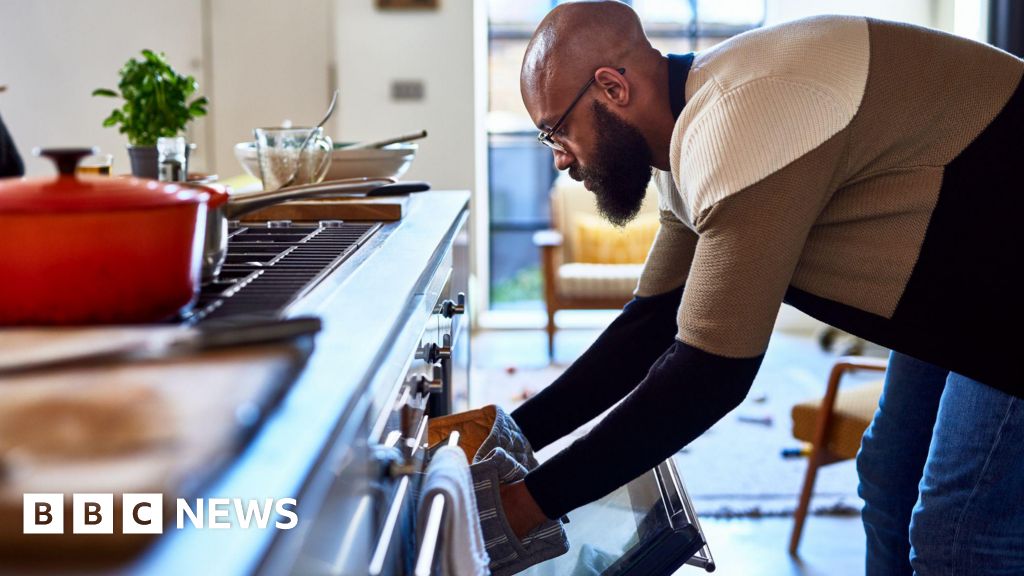President Joe Biden called the head of the United Auto Workers union to congratulate him this past week on getting a new contract with General Motors and to wish him a happy 55th birthday — a sign of how the relationship had evolved since their first get-to-know-you meeting in the Oval Office on July 19.
UAW President Shawn Fain launched the strike against GM, Ford and Chrysler-owner Stellantis with a willingness to force political leaders to choose between backing unions or corporations. Biden had long straddled this line. He proclaimed in speeches that unions built the middle class, but he also heralded his credentials as a former senator from the “corporate capital of the world,” also known as Delaware.
The White House was determined to build trust with Fain and look past his occasional slights of Biden. That approach, which included Biden meeting with workers on the picket line in Michigan, helped to resolve the nearly 45-day set of strikes and produced significant pay raises for workers.
But even as Biden’s sympathies publicly shifted toward union workers during the standoff, there are few signs that the UAW fully warmed to the Democratic president. Biden has yet to receive the union’s endorsement as he seeks reelection with the message that he has delivered for blue-collar workers.
The UAW declined to talk about its relationship with the White House. No final decision on the endorsement is expected to come until after contracts with the automakers are finalized, which probably will happen later this month.
The relationship between Fain and Biden could be crucial to the outcome of the 2024 election. More than 380,000 UAW members are scattered in states that include Michigan, Pennsylvania and Wisconsin, places where narrow margins have decided the overall winner of the past two presidential contests.
Gene Sperling, the White House liaison for the strike talks, was in daily contact with executives at the UAW and the three automakers. Biden tasked the economic adviser who has served in three Democratic White Houses to develop a bond with the UAW but also preserve connections with the automakers that are helping to deliver on Biden’s electric vehicle agenda.
Sperling told The Associated Press that he followed a set of principles in communicating with all sides: “We’re not here to intervene. We’re not here to mediate. But we want to be in touch. We want to be helpful.”
As the weeks stretched on, though, Biden and his team did less straddling and publicly stepped ever closer to the union.
At one point, Sperling stressed to the automakers the UAW’s position that new contracts needed a built-in cost-of-living adjustment, so that wages could be adjusted for inflation. That adjustment became part of the tentative agreement, which for GM workers also includes a 30% pay bump through April 2028, when the contract would expire.
Biden staked out his position that the autoworkers had made sacrifices during the 2008 financial crisis to keep their employers afloat. Now that automakers were pulling in billions of dollars in profits, the president said, those same workers should share in the rewards.
The politics were thorny as the president has suffered from low ratings on his economic leadership. U.S. adults have largely overlooked the healthy 3.9% unemployment rate to focus instead on inflation, including the 20% jump in new vehicle prices since he became president.
But union households have also been a decisive constituency for Democrats. They represent only 16% of voters nationwide, but Biden won the group by a solid 56% in 2020, according to AP VoteCast, a national survey of the electorate.
While organized labor has overwhelmingly backed Biden, the UAW remains a key holdout. Fain has criticized Donald Trump, the front-runner for the Republican presidential nomination in 2024, yet in the weeks leading to the strike and afterward, the labor leader could be out of sync at times with Biden.
When Fain went to the White House on July 19 to meet with senior officials, Biden insisted on a 30-minute meeting in the Oval Office without aides, Sperling said.
But Labor Day showed cracks in relations between the union and the White House. Asked by reporters about prospects for a strike that had yet to be declared, Biden tried to play down the risk.
“I’m not worried about a strike until it happens,” Biden said on Sept. 4. ”I don’t think it’s going to happen.”
Fain responded to a separate group of reporters by suggesting that Biden was misguided: “He must know something we don’t know. Maybe the companies plan on walking in and giving us our demands on the night before. I don’t know, but he’s on the inside on something I don’t know about.”
Sperling said the president was trying to be supportive of the unions with his comment. When the president saw how his remarks were interpreted, he called Fain directly to clarify.
Biden had multiple conversations with the automakers and Fain before the Sept. 15 strike deadline. When it became clear that a targeted strike would occur at a select number of plants, Biden showed his support for the UAW. He issued a statement that borrowed UAW language and said that Sperling and acting Labor Secretary Julie Su would go to Michigan to help with talks.
But the UAW did not want administration officials to come during the first week of the strike, Sperling said, because of the message it might send about the status of negotiations. By that point, there was enough trust that the misunderstanding did little from the White House perspective to hurt the relationship. Sperling and Su met twice in-person that next week with the negotiators.
Yet Fain took umbrage at Biden publicly suggesting that the negotiations had broken down and that this had led to the strike.
“We agree with Joe Biden when he says ‘record profits mean record contracts.’ We don’t agree when he says negotiations have broken down,” Fain said in a statement.
UAW officials told Sperling that Fain really wanted Biden to visit the picket lines, not as a political event but as a show of support for workers. Biden liked the idea. After that invitation was accepted, Sperling relayed to the automakers that Biden would meet with striking workers. The companies were unhappy but it did not derail talks.
Biden’s Sept. 26 visit to a Michigan picket line — a presidential first — garnered praise from Fain, but little else. Fain said that Biden “has chosen to stand up with workers” and added that “we know the president will do right by the working class and when we do right by the working class.”
But the UAW president declined to endorse the president who had engaged in the historic outreach.
“We’ll just see how things proceed,” Fain told The Associated Press at the time. “That’s up not just to me. It’s up to our leadership and our membership. And we have our process we follow. So as I said we’ll do that when it’s time.”
Still, the White House saw itself as building trust with the UAW as the talks progressed. Ford reached a tentative deal on Oct. 25, followed by Stellantis on Oct. 28, and GM was on the verge of a deal.
Sperling, boarding an unrelated red-eye flight, texted GM CEO Mary Barra and a UAW official to message him in case there was an agreement while he was midair. As soon as a tentative agreement was in place, Barra told the gathered negotiators that she needed to text the White House.
___
AP Auto Writer Tom Krisher in Detroit contributed to this report.
Credit: Source link










